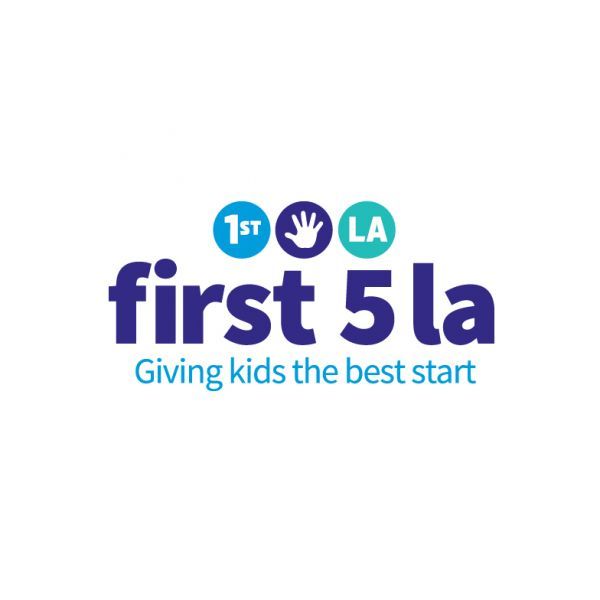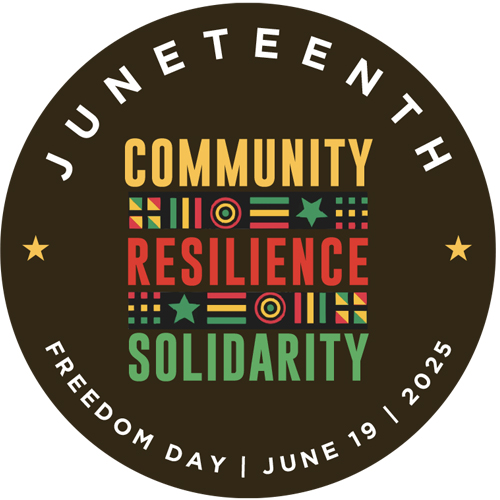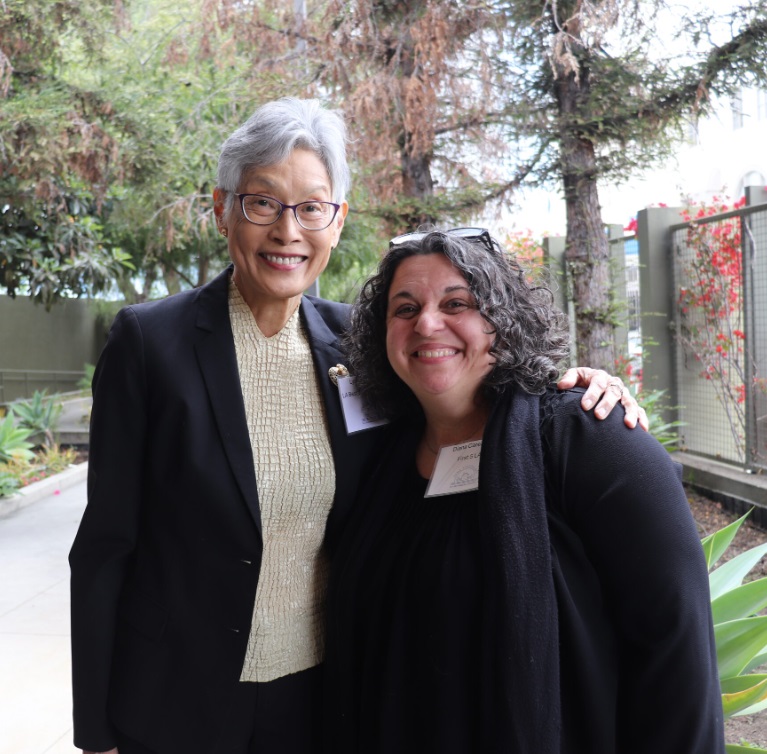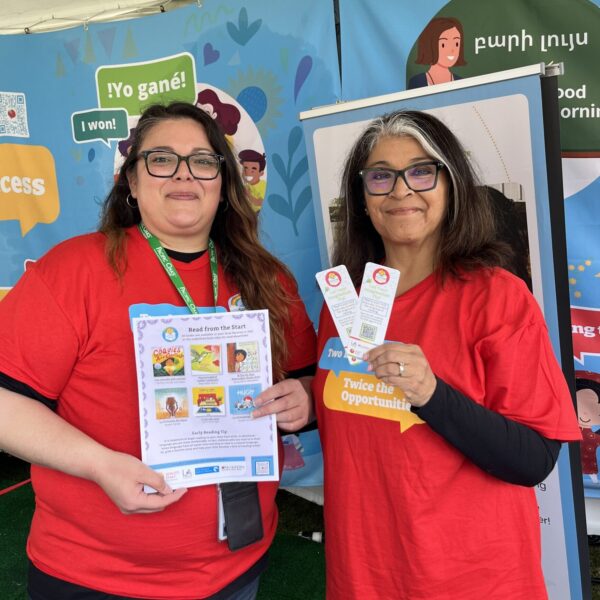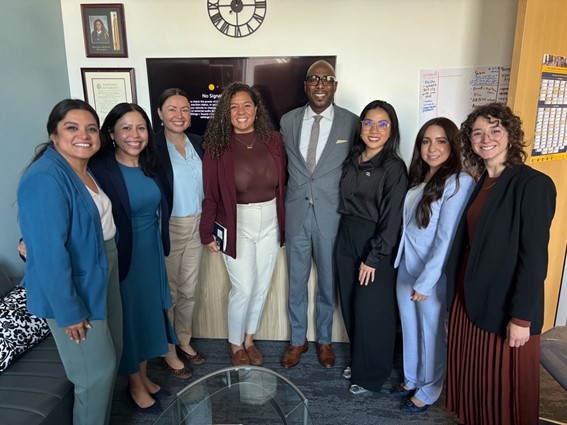Focusing for the Future: First 5 LA Strategic Plan 2015-2020
Frequently Asked Questions
First 5 LA’s 2015-2020 Strategic Plan serves as a roadmap that will help the organization improve how we contribute to positive and lasting change for children prenatal to age 5 and their parents/caregivers. The plan gives us greater clarity, direction and focus for the next 5 years and beyond. Together with the Governance Guidelines, the 2015-2020 Strategic Plan will ensure greater transparency in future decision-making and promote accountability. The following are some important and commonly asked questions related to the 2015-2020 Strategic Plan. It is divided into 4 sections: (1) background, which provides an overview of information that helped to shape the development of the plan; (2) process, which describes the steps used to develop the plan; (3) content, which outlines major components of the plan; and (4) common terms and definitions.
1.What information did staff use to inform the creation of the Plan?
There were many inputs staff used to create the plan. A few include:
- First 5 LA’s 2013 “Listening, Learning, and Leading” (L3) effort, which highlighted issues and opportunities for First 5 LA to contribute to greater impact for L.A. County’s young children and their families.
- Feedback from parents/caregivers, community leaders and residents, organizations we have funded, elected officials, nonprofits, First 5 LA staff and Board of Commissioners.
- First 5 LA’s Long-term Fiscal Projection, which analyzes current and future expenditures and tobacco tax revenues.
- The changing landscape for parents/caregivers in L.A. County, such as the change in L.A. County’s demographics and trends in key statistics that track the well-being of children prenatal to age 5.
- The policy and funding landscape for L.A. County, California, and the country, in order to identify key policy and funding developments and opportunities relevant to First 5 LA’s goals and outcomes.
2.Why is it important to examine and refocus First 5 LA’s strategic direction?
For more than 15 years, First 5 LA has been dedicated to serving children from prenatal to age 5 and their families. However, through an extensive assessment, First 5 LA heard that it lacks clarity and focus in its direction. This lack of direction was reflected in the organization’s funding and processes, which were seen as being scattered, trying to address too many issues, and not achieving population-level impact. In trying to be all things to all people, First 5 LA had created more than 50 initiatives.
If First 5 LA continued to conduct “business as usual” – spreading its declining resources over numerous discrete services whose benefit is limited to those fortunate enough to participate – the organization would only be able to help a relatively small number of families and children for a limited time. A new way to focus the work was needed in order to make the greatest impact on the children prenatal to age 5 and their families.
Additionally, from a financial perspective, First 5 LA is expecting a continued decrease in future tobacco tax revenue. State data indicates that annual tobacco tax revenue will decline by 15 percent over the next 6 years, from $90.3 million (FY 13-14) to $76.9 million (FY 19-20). Since 2008-2009, First 5 LA’s annual expenditures have more than doubled annual revenue, which is financially unsustainable. A focused strategic direction for First 5 LA is necessary to both contribute to greater impact for young children across the county and support alignment of First 5 LA’s revenue and expenditures.
3.Why does investing in the early years of a child’s life matter? Why is this important to families in L.A. County?
Research tells us the earliest years of childhood matter. We know the basic architecture of the brain begins to form before birth and that 80 percent of a child’s brain is developed by age 3. That means the earliest moments make a lasting impact in a child’s success in school and life. And when a child is successful in school, he or she is more likely to avoid the pitfalls and costly public expenses of school dropout, early parenthood, poverty and the justice system.
What happens to our youngest kids today will impact all of us tomorrow. When we dedicate attention and resources to children at the earliest stages of their life, we are laying the foundation for our future. When children and their families are supported, we are investing in the future of L.A. County.
4.What was the process for developing the 2015-2020 Strategic Plan?
First 5 LA’s 2015-2020 Strategic Plan was developed through a rigorous process that drew on the expertise, wisdom and contribution of a multitude of First 5 LA stakeholders. The process began with an extensive assessment that helped the organization understand its role in improving outcomes for L.A. County’s young children, as well as external factors such as new research and work being conducted by other organizations or agencies. Based on this robust foundation of data and analysis, First 5 LA worked with the community, its stakeholders, Commissioners and staff to develop a 2015-2020 Strategic Plan that would help us achieve our overarching result: that every child in L.A. County enter kindergarten ready to succeed in school and life.
5.What are First 5 LA’s Priority Outcomes and how were they identified?
First 5 LA identified the areas that affect children’s ability to enter kindergarten ready to succeed in school and life. L.A. Unified School District data, for example, highlight critical gaps in early care and education, with only 34 percent of Latinos and 37 percent of African American students scoring at or above 3rd grade reading proficiency. Substantiated abuse and neglect was also found to be increasing for children prenatal to age 5 in L.A. County. With such analysis and data in mind, First 5 LA’s Commissioners developed Priority Outcomes to strengthen parents and caregivers in the context of families, communities and systems of services and supports so they can, in turn, support the best possible outcomes for children prenatal to age 5. These Outcomes were tested and refined through a community survey as well as an examination of external factors, such as new research and work being conducted by other organizations or agencies.
First 5 LA has identified 4 interdependent and connected ways in which it can work with partners to help children enter kindergarten ready to succeed in school and life. The Priority Outcomes are:
- Families: We will work with parents and caregivers so that they have the skills, knowledge and resources they need to support their child’s development.
- Communities: We will support a community’s ability to foster safe, healthy, engaged neighborhoods that help children and their families thrive.
- Early Care and Education Systems: We will increase access to affordable, quality childcare and preschool.
- Health, Mental Health and Substance Abuse Services Systems: We will improve how health-related systems coordinate and deliver care to young children and their families in L.A. County.
6.What are First 5 LA’s Focus Areas?
In order to provide a clear, well-defined focus for our work, Priority Focus Areas were identified to further define the type of change that First 5 LA can measurably affect within each Outcome. First 5 LA has 9 Priority Focus Areas, each of which supports our Outcomes. An example of a Focus Area within each Outcome is provided below. For the complete list of Focus Areas, please see the 2015-2020 Strategic Plan.
- Families
- Focus Area: Increased parent/caregiver resiliency; social connections; knowledge of parenting and child development; capacity to provide enriching, structured, and nurturing environments for their children; and access to concrete supports in times of need.
- Communities
- Focus Area: Community members have a shared vision and act collectively to improve the policies, services and environments that impact families.
- Early Care and Education Systems
- Focus Area: Improved access to affordable, quality, sustainable early care and education, particularly among high risk populations.
- Health, Mental Health and Substance Abuse Systems
- Focus Area: Increased effectiveness and responsiveness of screening and early intervention programs across health, mental health, and substance abuse services systems.
7.How did First 5 LA determine its Strategies and what are they?
Strategies describe how First 5 LA will create impact within each of the Priority Outcomes and Priority Focus Areas. We have identified 10 specific strategies, which represent ways in which we can make a significant difference in helping children enter kindergarten ready to succeed in school and life. These 10 Strategies were developed based upon First 5 LA’s research and experience in the Outcome areas and stakeholder engagement. An example of a Strategy within each Outcome is provided below. For the complete list of Strategies, please see the 2015-2020 Strategic Plan.
- Families
- Strategy: Lead the testing, modification, and expansion of evidence-based practices and programs that work directly with parents/caregivers to increase family Protective Factors, with a primary focus on Welcome Baby and targeted home visiting models. Note: See Q21 below for more information on Protective Factors.
- Communities
- Strategy: Convene and create opportunities for collaboration among parents/caregivers, residents, organizations, and institutions across multiple sectors within the Best Start Communities to work together to achieve the core results of the Building Stronger Families Framework.
- Early Care and Education Systems
- Strategy: Advocate for greater public investment in quality early care and education, with a focus on both infant/toddler care and preschool.
- Health, Mental Health and Substance Abuse Systems
- Strategy: Advocate for policy and practice changes to support efforts to improve coordination and functioning of developmental screening, assessment, and early intervention programs.
8.When does the 2015-2020 Strategic Plan take effect and what are next steps for the plan?
The new 5-year Strategic Plan takes effect July 1, 2015. To ensure First 5 LA is prepared for implementation, we will undertake implementation planning activities this winter and next spring, including refinement of strategies, development of an evaluation and learning framework to measure our progress, and organizational alignment of staffing, structure, and processes.
9.Will First 5 LA seek additional revenues or will First 5 LA rely on tobacco tax revenue?
As of now, First 5 LA relies on tobacco tax revenue. During implementation planning, First 5 LA will explore opportunities to increase revenue from alternative sources.
10.What is new or different about First 5 LA’s 2015-2020 Strategic Plan?
First 5 LA’s 2015-2020 Strategic Plan puts parents/caregivers at the center of our work, given their central role in a child’s development. Our plan recognizes that when parents/caregivers have the skills, knowledge and access to resources they need to support their children, then child outcomes will improve. However, parents/caregivers do not operate in a vacuum. They live in neighborhoods, belong to communities and interact with systems of services and supports. Accordingly, First 5 LA’s 2015-2020 Strategic Plan sets a path forward for the organization to focus on:
- Working with parents and caregivers to make sure they have the skills, knowledge and access to resources they need to support their child’s development.
- Supporting a community’s ability to foster safe, healthy, engaged neighborhoods that help children and their families thrive.
- Increasing access to affordable, quality childcare and preschool.
- Improving how health-related systems coordinate and deliver care to young children and their families in L.A. County
Additionally, in the past, First 5 LA has focused much of our efforts on supporting direct services across multiple discrete, unrelated programs. Moving forward, First 5 LA will place greater emphasis on policy, advocacy and systems change efforts that offer the potential to have a broad, lasting impact for children prenatal to age 5 and their families. Direct service efforts will be focused on research and development in order to advance systemic solutions that will address children’s school readiness. In addition, First 5 LA will focus on systems-level change – working with organizations, communities, and public agencies in new ways to change how services and supports are organized and delivered – to allow the greatest number of children to be kindergarten ready. With system-level change comes improved processes, fresh thinking, changes in people’s attitudes and behaviors, and new practices and safeguards.
11.What does the work outlined in the 2015-2020 Strategic Plan mean to parents/caregivers, children, grantees and partners?
The overarching result First 5 LA seeks is that every child in L.A. County enters kindergarten ready to succeed in school and life. What will that take? Parents/caregivers with the skills, knowledge and access to resources to support optimal development; communities that promote family-supporting neighborhoods; and systems of services and supports that are coordinated and responsive to the needs of families with young children. As the organization shifts its investment strategy, First 5 LA will work with partners, old and new, to support parent education and engagement, community building, and policy initiatives. This work will support children from prenatal to age 5 and their families in a way that achieves broad-based, lasting impact.
12.Is First 5 LA moving away from funding direct services?
First 5 LA is not moving away from funding direct services, rather it is refocusing the way it funds these services. At the direction of the Commission, as provided under the Governance Guidelines and 2015-2020 Strategic Plan, First 5 LA’s investment strategy will maximize the return on its resources by contributing to initiatives that will create the greatest possible impact for children prenatal to age 5 and their families. To that end, First 5 LA will place greater emphasis on policy and systems-level change as they have the ability to create lasting change for the greatest number of children.
13.How does the 2015-2020 Strategic Plan affect First 5 LA’s current commitments?
First 5 LA is committed to seeing all current funding commitments through to the end of their contract term. Consistent with the Governance Guidelines, First 5 LA support will end pursuant to the time stated in the grant/contract award. The Commission is under no obligation to continue funding beyond the expiration date. All new funding will be reviewed according to First 5 LA’s Governance Guidelines and 2015-2020 Strategic Plan.
14.How does the 2015-2020 Strategic Plan affect First 5 LA’s investment in Los Angeles Universal Preschool (LAUP)?
First 5 LA’s current contract with LAUP will expire June 30, 2016, consistent with the Commission-approved Governance Guidelines, which require all contracts to end at their scheduled expiration date. LAUP has taken proactive steps to prepare for the end of its contract with First 5 LA in June 2016; these steps were informed by LAUP’s experience and successes, the changing early care and education landscape, and its efforts and considerations around sustainability. Additionally, First 5 LA has provided LAUP with financial and human resources to support LAUP during this timely and necessary strategic and business planning process.
First 5 LA looks forward to working with LAUP and other early care and education (ECE) partners where there is an alignment of strategic priorities in such areas as advocacy for ECE public policy change, a uniform quality rating and improvement system, and workforce development.
15.How do the Welcome Baby and Best Start efforts fit within the 2015-2020 Strategic Plan?
The Strategies in the Families and Communities Priority Outcomes build upon First 5 LA’s current Welcome Baby and Best Start work.
- Welcome Baby: First 5 LA will continue its support of Welcome Baby, a prenatal and newborn home visiting program, which represents a significant investment in enhancing the child-parent/caregiver relationship and the health, safety and security of children and their families. First 5 LA will support Welcome Baby and, as needed, intensive home visiting services for all new parents in the 14 Best Start Communities. Additional investments include support for efforts to measure Welcome Baby’s impact, advocacy for public and private investments in Welcome Baby, and communications to increase county-wide awareness and knowledge about the program and its impact.
- Best Start: First 5 LA’s place-based work will continue in order to support family strengthening and build community capacity in the 14 Best Start Communities. Specifically, we will continue to work within each Best Start Community to build their capacity to communicate their activities within and across Best Start Communities to broaden participation. We will also work within these communities to build their knowledge and skills to advocate for greater investment and to help these communities make more informed decisions about early care and education and health-related services and supports.
16.How is First 5 LA going to decide which efforts it will fund in the future?
Consistent with the Commission’s direction to clarify and focus First 5 LA’s strategic direction, role and impact, the Board adopted 6 investment guidelines to inform decision making. The guidelines require that investments:
- Focus on prevention.
- Focus on public policy change to increase public investments in children and families, and service delivery system improvement to increase the effectiveness and coordination of services and supports for families with young children.
- Seek to have a broad impact, affecting large numbers of people.
- Prioritize investments that strengthen families and, whenever possible, improve the communities in which they live.
- Prioritize the identification and increase of practices that are backed up by evidence.
- Engage partners at the earliest possible stage of activity and/or investment.
17.Will there be a set amount of funding for each Outcome?
In developing the 2015-2020 Strategic Plan, First 5 LA conducted analyses to estimate the cost of implementing the plan by the 4 Outcome areas. These cost estimates will continue to be refined during implementation planning. Additionally, the annual review of the 2015-2020 Strategic Plan will provide another opportunity to update estimated expenditures.
18.How will First 5 LA be accountable? How will it measure success?
First 5 LA is committed to using data to understand its contribution to Priority Outcomes, refine its Strategies, and continuously improve in order to best support children from prenatal to age 5 and their families.
As part of the work over the next 5 years, First 5 LA will:
- Develop systems to collect data to determine progress toward goals.
- Conduct evaluations that help to identify best practices and lessons learned.
- Share progress and learning through tools such as dashboards and an Annual Accountability and Learning report.
19.What are First 5 LA’s Governance Guidelines?
First 5 LA’s Governance Guidelines provide important guardrails that help the organization make decisions about investments. First 5 LA adopted Governance Guidelines to promote transparency, consistency and focus in our decision-making, budget development and Strategic Plan implementation. The Commission believes these decision-making rules will help the organization contribute to greater impact on behalf of young children in L.A. County.
20.What is systems change?
Systems change is working with organizations, communities, and public agencies in new ways to change how services and supports are organized and delivered.
When we change and improve systems:
- Organizations and communities work better together
- How services and supports are delivered improve
- People’s attitudes and behaviors change
- New practices and safeguards are put into place that protect families
- Better services and programs are offered
21.What are the Protective Factors?
The Center for the Study of Social Policy’s research shows that when parents/caregivers have certain skills and supports, child outcomes improve. These skills and supports are known as Protective Factors and include the ability of parents and caregivers to: (1) manage stress, (2) have positive relationships and social connections, (3) understand how a child develops and their role in supporting his/her growth, (4) provide positive environments for their children and (5) have access to services when they need it.
First 5 LA’s 2015-2020 Strategic Plan will support parents to develop the Protective Factors in the context of families, communities, and systems of services and supports.
22.What is the Building Stronger Families Framework?
First 5 LA’s place-based work, known as Best Start, operates under the Building Stronger Families Framework (BSFF). This Framework asserts that if families are strong and communities support families to succeed, then children will be healthy, safe, and ready for school. Given this, the BSFF identifies family and community strengths and capacities – grounded in the Protective Factors – that can help ensure that all children enter kindergarten ready to succeed in school and life:
Families:
- Family capacities – knowledgeable, resilient, and nurturing parents/caregivers
- Social connections – families participating in positive social networks
- Concrete supports – access to services and supports in times of crisis
Communities:
- Coordinated services and supports that meet families’ needs
- A shared vision and collective action to strengthen families
- Social networks and safe spaces or recreation and interaction
